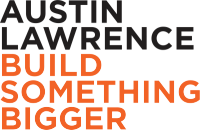Think about your own behavior on websites that mislead you… why offer SaaS pricing that you’re not willing to give?
One of the more frustrating discussions we have with clients is about SaaS pricing. Not the pricing model itself (though these conversations can be difficult), but whether or not to put the price for the software on the company’s website for all site visitors to see.
We hear various reasons why the price shouldn’t be displayed, but they usually come down to concerns about competitors using price intelligence against them, salespeople thinking that price transparency might dissuade people from speaking with them or buying the software, or the software is highly complex and expensive (enterprise sale). I plan to address these concerns, but first, let’s talk about the user experience of a pricing page without prices.
This has to be one of the worst web experience failures of modern SaaS marketing. If you post a pricing page, you can pretty much assume that the person who visits wants to know what it costs to use your software and what options they have to tailor it to their needs. They’re either tire-kicking, researching to inform a budget, or want to see if your product fits with what they can pay. Of course, there may be competitors doing research, too, but it’s foolish to think they can’t get your pricing with minimal effort.
The price you pay for deceiving site visitors is that they trust you less than they did just moments before. This loss of trust no doubt leads to fewer inquiries and lower revenue – after all, you just lied to them (“visit our pricing page to learn more”).
Recommendation: If you can’t get your team to agree on revealing prices, rename the page to “packages,” so that you’re not making a promise that you don’t keep. Cognitive dissonance is one of the worst things you can instill in a potential buyer. A “packages” page can provide a user with good information about what different ways you offer your software and help them to be a better prospect by self-selecting to get more information on a package they think fits their needs.
If your software is sold mostly to entrepreneur-scale companies or individuals and small teams, it’s probably best to have pricing revealed. These decisions are made relatively quickly and without a formal review process. Anything that gets in the way of the conversion, like making them attend a sales presentation or demo, can reduce your conversion rates. Of course, offer the demo, as many people will need deeper conversations to convert, but make buying as easy as possible.
Recommendation: A/B test a few versions of your pricing page to see what converts best. Depending on your CMS, you may be able to do this right on the web in real-time, rather than waiting for traffic to accumulate for a few days or weeks and then posting an alternative version. For this test, I’d keep my pricing model static so that you can attribute leads and sales more directly to the way the pricing page is constructed and the information shared.
If you sell enterprise software, few visitors will expect pricing to be on your website. In this case, I’d either do away with the packages notion altogether (this level of detail may not be required) or make it summary kind of info that indicates what levels of involvement an organization can have with your software – the roles/functional areas it supports may be more important to highlight than particular features (and since a lot of enterprise RFPs include tick-lists of features, best to get past the first hurdle before some procurement exec rules you out prematurely).
Recommendation: Since most enterprise software deals have a structured review process involving said RFPs, you might benefit handsomely by influencing what goes into prospect RFPs. Check out our Model RFP for SaaS. This free resource will help you to quickly build an RFP document that you can share with prospects on your website and through your sales process to influence prospects to seek a solution as much like yours as possible. If you gate the RFP, you’ll have bottom-of-the-funnel leads to share with sales (admittedly not a torrent, but those who do download will be VERY qualified).
Final thoughts...
If you’re looking for a good overview on SaaS pricing page best practices, check out this blog from OptinMonster: 20 Pricing Page Best Practices That Will Increase Your Sales, and this from PayLane (a subscription payments service): 11 Tips for a Pricing Page from 10 SaaS Rockstars.
Want to talk about pricing strategy and improving conversions on your website? Click here to set up your complimentary consultation. Happy to explore your pricing and packaging options and share insights from our experience.







